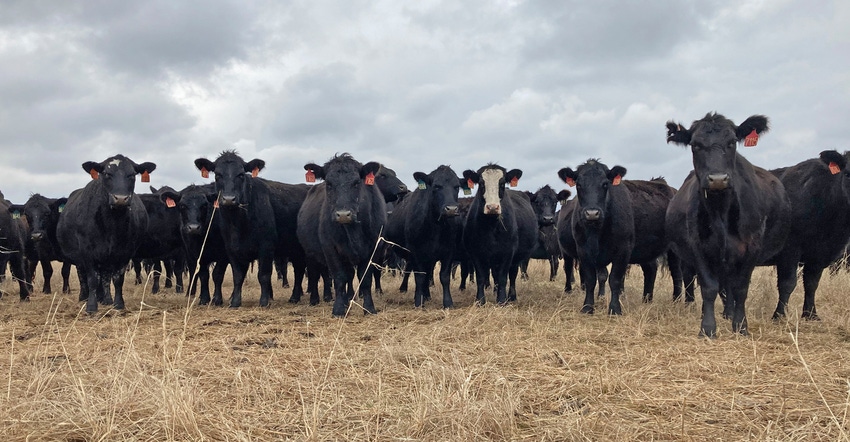
Kansas is beef country. Cattle and calves generated $8.93 billion in cash receipts in 2019, which accounted for 55% of the state’s ag cash receipts that year.
Looking at the Kansas Department of Agriculture’s Implan economic model, when you include the indirect and induced effects, the total impact of the beef cattle sector on the Kansas economy is right at $14.8 billion in output and 66,789 jobs. And, the processing of those cattle has a direct output of $10.9 billion, and a total 18,726 jobs.
Look forward
With these numbers in mind, the July 15 Kansas Governor’s Summit on Agricultural Growth Beef Sector virtual breakout session focused on future opportunities for the sector and identified any challenges that the state agency and industry might need to address.
Glynn Tonsor, a Kansas State University professor and agricultural economist, says the beef industry — not just in Kansas but nationwide — is in the midst of a lot of turmoil and high emotions. And the only way to work through that is to go forth with a growth mindset.
Tonsor spoke on the pandemic shocks to meat demand, the issues surrounding packing capacity and cattle inventory, traceability and international trade.
Pandemic shocks
Tonsor reminded attendees that the pandemic shifted meat consumption trends because of everyone working from home and not dining out in public. That trend showed up in early March 2020, he says. This particular shock led to an unexpected shortage of product in the retail sector, and a lot of product in the food service sector going to waste. But, the tide is slowly changing.
“A lot of the strength in the box beef price in the last, I’ll say three months, has had to do with the pipeline being refilled on the food service side of things,” Tonsor says. “State by state as we’re opening the economy back up, and foot traffic through restaurants and hotels and the like is recovering, we’re sort of undoing this shift.”
The bottleneck of live animals going through the limited processing capacity was another shock felt during the pandemic. Tonsor says that bottleneck brought a lot of attention to the beef industry from consumers who suddenly couldn’t find the cuts of beef they wanted in the grocery stores. And that, in turn, has the potential to put even more pressure on transparency in the industry.
“Societal interest in how we produce meat and what our meat production system is, I would argue, has never been higher,” Tonsor says. That’s something to also keep in mind for the future, he adds.
The third pandemic shock was in the actual consumer meat demand. He says he wrongly expected in the early months of the pandemic that consumer spending would drop and lead to weaker meat demand.
“So, consumer demand in hindsight actually was quite strong, but that’s because of the unprecedented federal stimulus,” Tonsor says. That gave a needed boost to consumer incomes and spending.
Packing capacity and inventory
The relationship between packing capacity and fed cattle inventories is probably the most important and contentious relationship today, Tonsor says. And it’s evolving.
In 2020, Tonsor says there were about 12% more cattle than there was normal slaughter capacity, and the processors worked through that by running on Saturdays and adding double shifts. That also led to a wider difference between the box beef and cattle prices.
This relationship depends on a lot of factors, from the physical plant capacity and smooth operating conditions, to labor availability, to economic signals. But Tonsor predicts that the industry will add capacity one way or another in the coming years to bring us back to an equilibrium. And that presents an opportunity for Kansas to grow its processing sector.
Traceability and international trade
“There’s certainly a lot of commentary about the general public, consumers, wanting to know more about where their food comes from,” Tonsor says. “I 100% agree with that. But I think some relative context is also important.” Average consumers, he says, routinely rate taste, freshness, safety and price as more important than animal welfare, traceability and environmental impact in their purchasing decisions.
Yes, he says, there are individual market opportunities, but in general, the wider U.S. consuming public isn’t worried about traceability.
That said, livestock traceability has value to the entire production chain in that it can verify those marketing claims and that higher price to the consumer, he adds. And it also helps in responding quickly to any animal disease outbreaks and can help keep Kansas a top beef exporter to countries who value that traceability.
Going forward
The next step will be gathering Kansas agricultural stakeholders Aug. 26 for the in-person Ag Summit in Manhattan, Kan. There, stakeholders will further discuss these opportunities and challenges to the beef sector and other sectors, and how the state government might work with stakeholders to address them in the near future.
“I sincerely believe that Kansas does have a valuable opportunity given its unique status within the U.S. industry,” Tonsor says. “Kansas is on the very short list of states that has commercially viable seedstock, cow-calf, stocker, feedlot and packer segments. Very few states have all of the above.” And Kansas works well with other states, he adds. For example, Kansas feedyards routinely import more cattle from out of state than are raised in-state to finish on Kansas grain.
Going forward, Tonsor advises stakeholders that they need to have not only a business approach, but also consider how Kansas collectively works with other states and with other countries.
To see the full recording of the Beef Sector breakout session, and other sessions, visit agriculture.ks.gov/aggrowthstrategy. You can also sign up to participate in future sessions online at the same address.
About the Author(s)
You May Also Like






